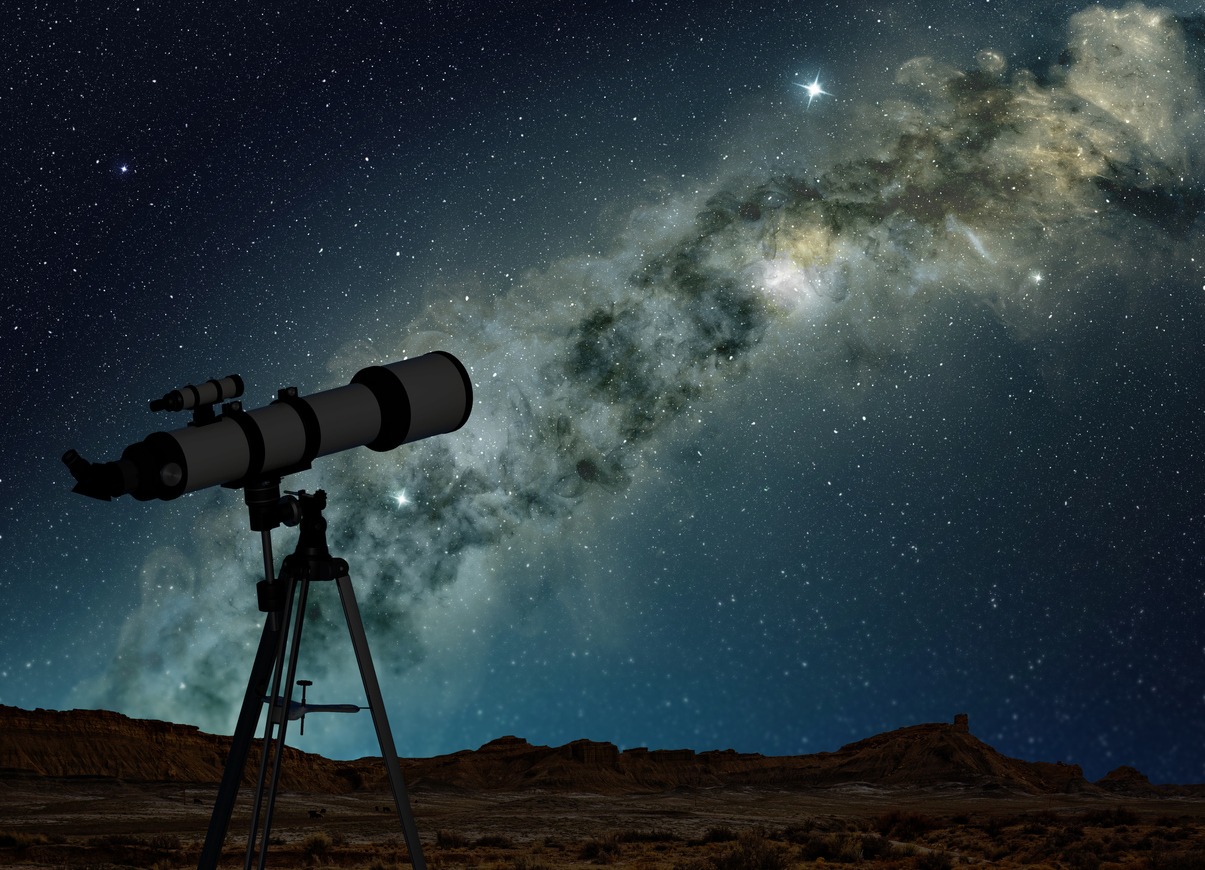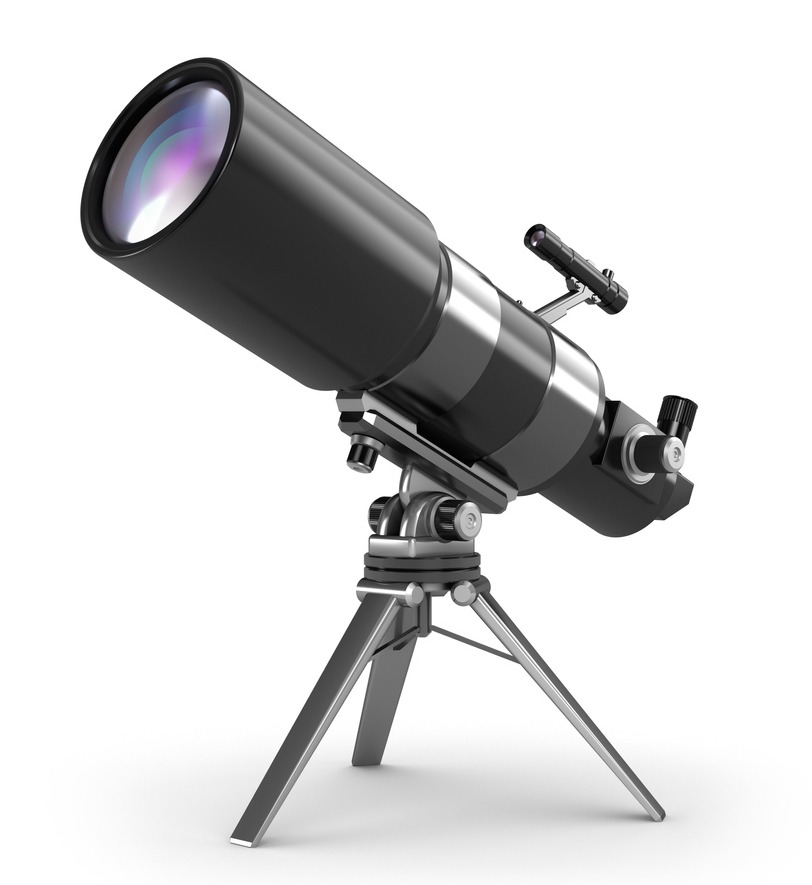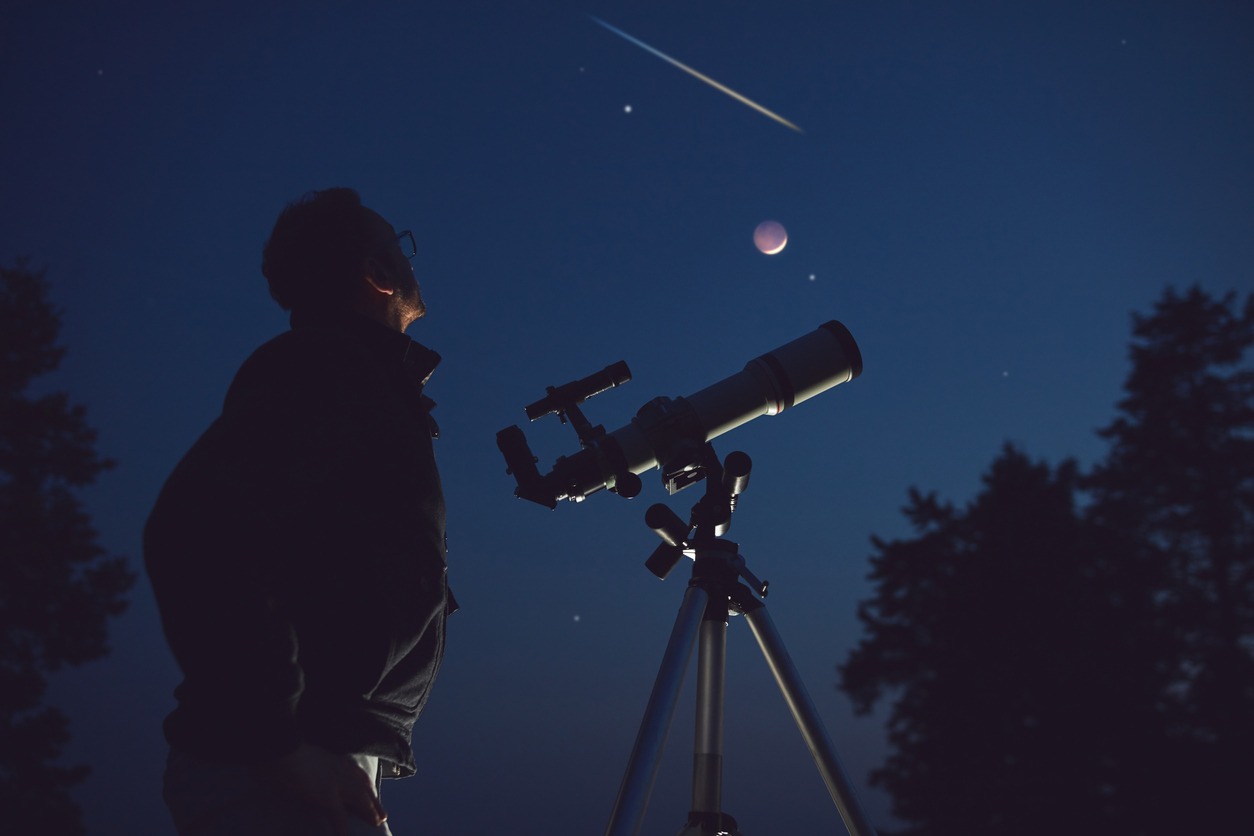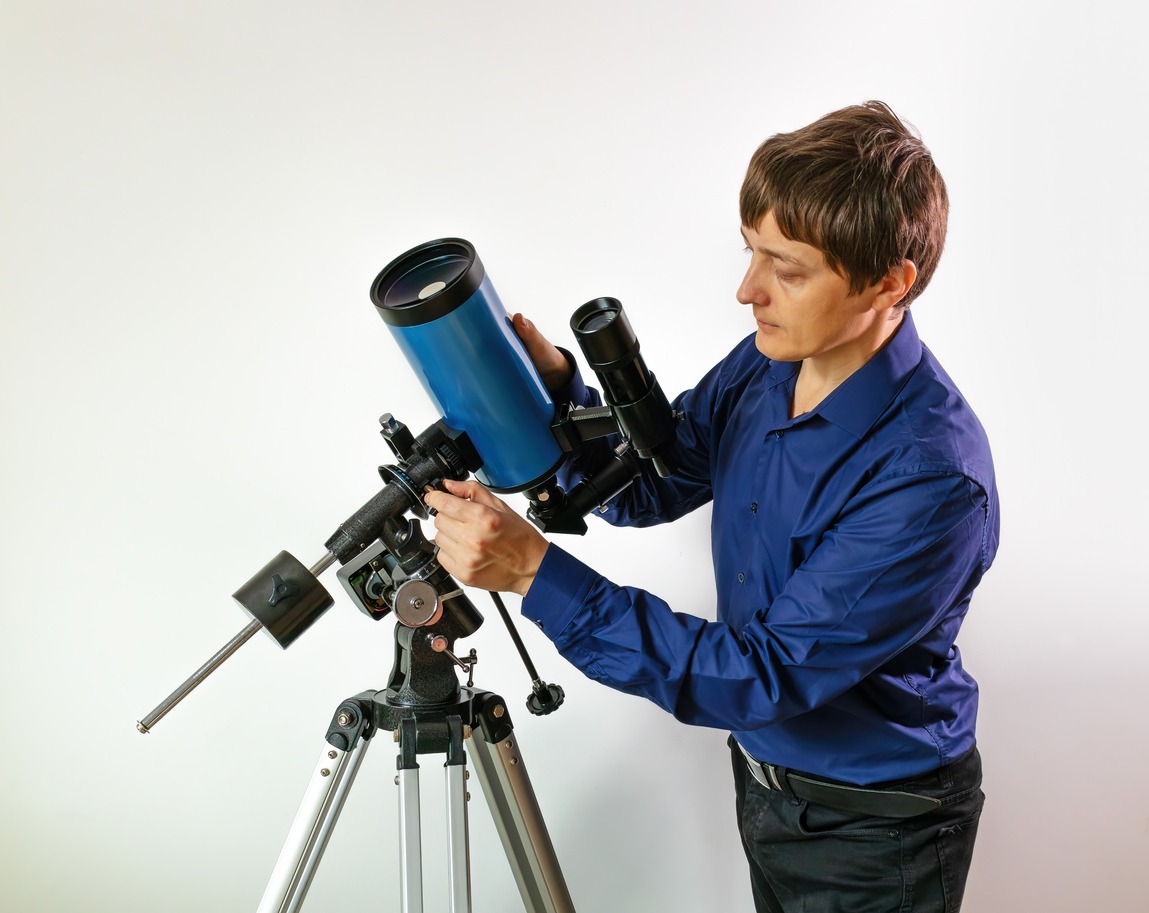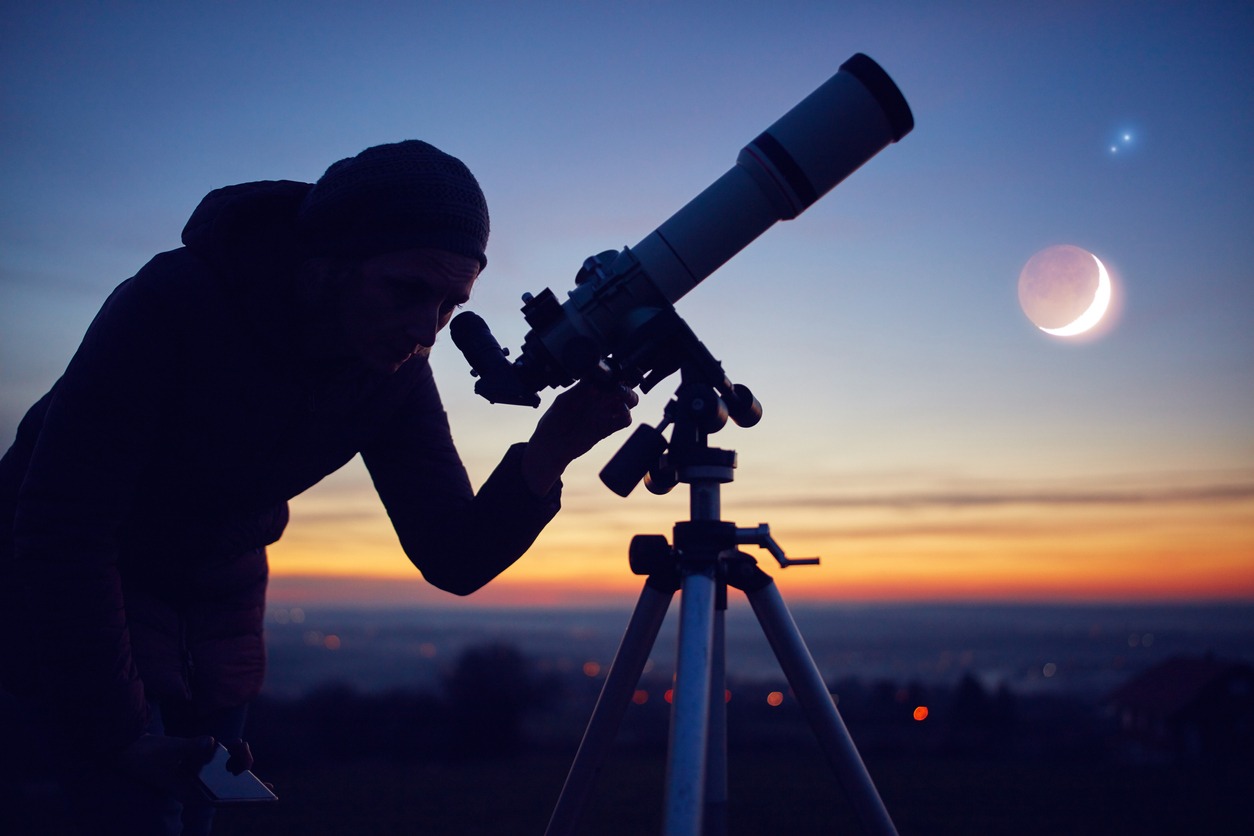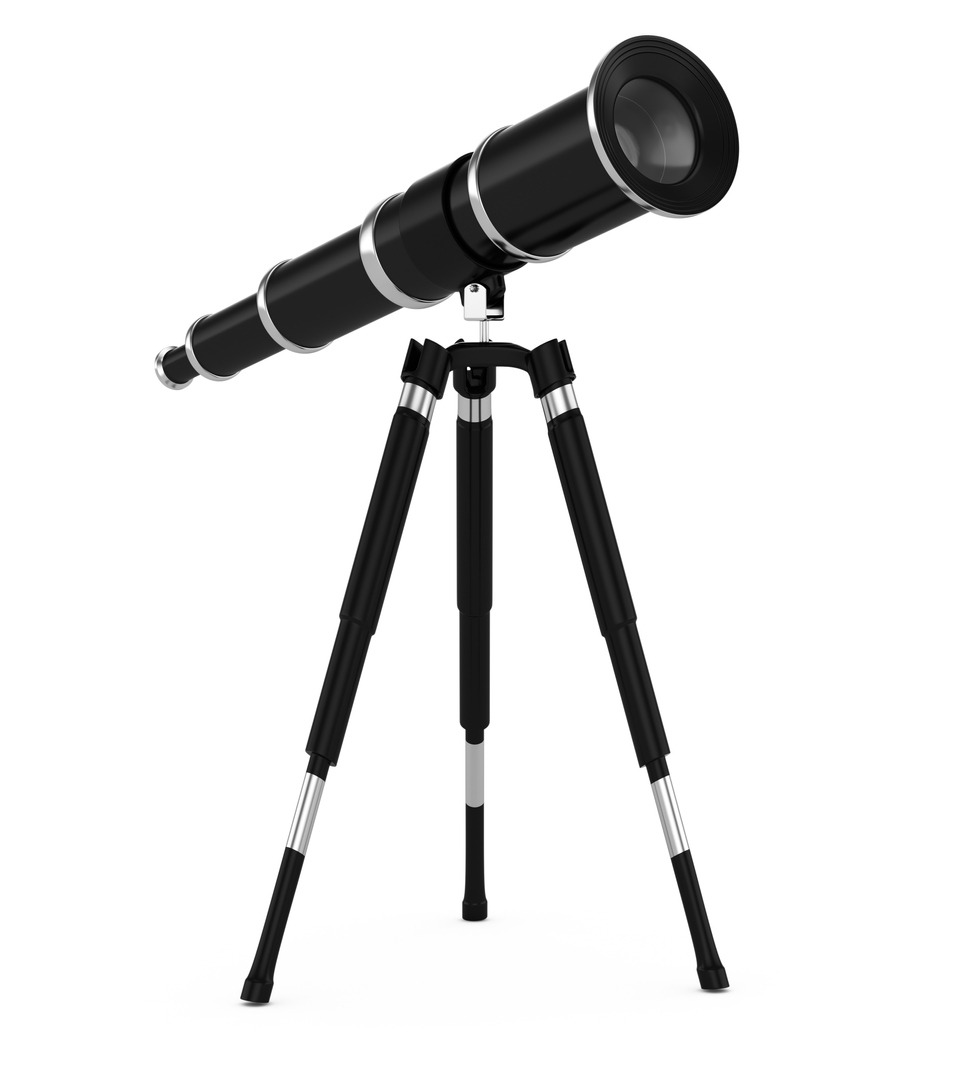Since the advent of telescopes, reflecting and refracting models have been the two main kinds of mainstream telescopes. Over the years, as technology advanced, the reflective and refractive telescopes improved, and another kind of telescope, the catadioptric telescope, started gaining popularity. A catadioptric telescope uses a combination of reflecting and refracting optics simultaneously, so you get the best of both worlds.
Catadioptric telescopes are instrumental in various fields, including scientific research and astronomy. This guide aims to give you the basic information about catadioptric telescopes so that you can gauge whether or not it fits your needs. It includes an overview, key features, types, advantages, and disadvantages of Catadioptric telescopes.
What Is a Catadioptric Telescope?
A catadioptric telescope is also called a compound telescope owing to the combination of refracting and reflecting elements that it uses. This optical telescope is designed to have specifically shaped mirrors and lenses to form an image. By using both reflective and refractive elements, the telescope aims to have a greater degree of error correction and a wider aberration-free field of view.
The primary mirror of a catadioptric telescope is usually a parabolic or spherical mirror, and the second is convex. These telescopes also have a corrector plate that is designed to correct any chromatic or spherical aberration. Corrector plates are placed in front of the primary mirror and are made using either glass or plastic and have a plano-convex or meniscus shape.
Due to how the light passes through the lenses and focuses, catadioptric telescopes have a wide-field advantage over refractor telescopes. Maksutov-Cassegrain telescopes have high magnification, which is usually found in reflector telescopes. They have a three-optic system of two lenses and one concave mirror, which makes them much more compact and portable.
One of the main downsides to catadioptric telescopes is that they are complex and challenging to manufacture as compared to refractor and reflector telescopes. This is because it uses both mirrors and corrector plates that must be aligned correctly in order for the telescope to function accurately.
Design
A catadioptric telescope combines the best of reflective and refractive lenses and incorporates them into a single telescope. A catadioptric telescope consists of lenses, mirrors, the telescope tube, and the corrector plate.
Mirrors are essential to catadioptric telescopes as they incorporate one or more mirrors. Depending on the design, these mirrors are either placed alongside the lenses or as secondary reflectors. In some types of catadioptric telescopes, two spherical mirrors are used. One acts as a primary mirror and the other as the secondary.
To hold all the optics together, there is a telescope tube, which is the body of the telescope. The design of this depends on the lens-mirror arrangement. Typically, a telescopic tube has a 10cm or 4 inches radius but can vary depending on the size and design of your telescope. It also has a knob below the visual back, which helps adjust the focal length setting.
The corrector plate helps improve image quality. As the name suggests, corrector plates are thin lenses or a group of lenses placed in front of telescope lenses. They help correct the aberrations caused by the optical system of catadioptric telescopes. These plates are also called correcting lenses.
Applications
Catadioptric telescopes are widely used in laboratories for scientific purposes and for astronomy. Due to their compact size and compound design, they are perfect for viewing far-away objects such as celestial bodies. You will also find catadioptric telescopes used in astrophotography, amateur astronomy, and scientific research.
Amateur Astronomy
One of the most common uses of catadioptric telescopes is in amateur photography. They have an easy-to-use and compact design. They are also intuitive, making them the perfect telescope to buy if you are interested in astronomy and want to view celestial bodies.
Astro-Photography
A catadioptric telescope is perfect for astrophotography as it offers a clear view of far-away objects, meaning you can take a stable and high-quality picture. Due to their lightweight nature, such telescopes are also portable, meaning you can easily carry them around with you without straining yourself too much.
Scientific Research
Using catadioptric telescopes, you can explore planets, stars, and even galaxies. Since space exploration is ongoing, a telescope will be a perfect device to further such research.
Types of Catadioptric Telescopes
Catadioptric telescopes come in various types based on how the optics are arranged. Here are the three most popular types.
Cassegrain Telescope
A Cassegrain telescope is the traditional model of the catadioptric telescopes and was created by Laurent Cassegrain, a French priest, and astronomer. In this configuration of the catadioptric telescopes, the focal length is long, and the primary and secondary mirrors are in the same plane. Therefore, the configuration is much like that of a Cassegrain reflecting telescope.
It uses two lenses, and compared to a refractor telescope, it has a shorter tube length and a smaller primary mirror diameter. It also has a smaller aperture size. The design makes this kind of telescope less expensive to build. Still, you must be wary of the limited aperture size and the amount of light it can collect.
Schmidt-Cassegrain Telescopes
The Schmidt-Cassegrain telescope is an adaptation of the Cassegrain design and was invented by a German-Estonian astronomer Bernhard Schmidt. In such telescopes, the primary and the secondary mirrors are tiled, which allows the secondary mirror to be placed behind the primary mirror. This orientation allows the telescope to be shorter and much more compact. It also allows for a large secondary mirror to be placed farther from the primary one. This setting allows more light to be reflected toward the secondary mirror.
Maksutov-Cassegrain Telescopes
The Maksutov-Cassegrain telescope was created by optician Dmitri Dmitrievich Maksutov. This telescope combines the advantages of the Schmidt-Cassegrain and the Cassegrain telescope. This means that it has a short length and large apertures like a Cassegrain telescope and a large secondary mirror like the Schmidt-Cassegrain telescope. Like refractor telescopes, Maksutov-Cassegrain telescopes have a wide field of view and low distortion. However, the field of view is not as wide as that of a refractor telescope. Still, it varies depending on the design and specification of the telescope. They also have high powers of magnification, like reflective telescopes.
Advantages and Disadvantages of Catadioptric Telescopes
Catadioptric telescopes have advantages and disadvantages that you should consider before purchasing one.
| Advantages | Disadvantages |
| They can have a shorter focal length as it uses a folded-path optical system. | As the aperture increases, it becomes heavier. |
| They are lighter and more compact as compared to other telescopes with the same aperture. | They require precise optical alignment. |
| They are portable. | Catadioptric telescopes tend to be more expensive than other types. |
Maintenance of Catadioptric Telescopes
When investing in a catadioptric telescope, it is vital that you take care of it so that it lasts you a long time. The main thing you need to do regularly is clean the optics. When you do so, avoid touching the optical components, such as the lenses, with your hands. Always use compressed gas, lens tissues, or surgical cotton.
If you plan on traveling with your telescope, ensure that you pack it carefully in a bag. Since catadioptric telescopes have complex moving parts, you should avoid disassembling them. Ideally, you should purchase a bag that can fit the telescope and all its components in separate compartments.
Things To Consider When Purchasing a Catadioptric Telescope
If you are just starting out in astronomy, purchasing the right kind of telescope is essential. Since there are many different kinds of telescopes with different qualities, choosing one can be difficult. However, if you know all the essential features, you can easily pick one that fits your needs. Here are some factors that you should take into account.
Aperture Size
The aperture is the diameter of a telescope’s mirror or primary lens. When choosing a telescope, you should aim to purchase one with a large aperture. This is because they collect more light, making even faint objects appear bright and clear.
It may be tempting to purchase a telescope with the largest aperture size. Still, you should remember that the larger the aperture of your telescope, the heavier and more expensive it will be.
Focal Length
The focal length of the eye-piece is the key to determining your telescope’s power or magnification. The focal length is the distance between the image formed by the telescope and the primary or objective lens. This number is often printed or engraved on the telescope tube and ranges between 400 and 3000 millimeters.
To find the magnification of a telescope you intend to buy, you can divide the focal length of the telescope by that of the eyepiece.
Mount Type
A telescope mount is just as important as other parts because keeping your telescope steady is extremely important. A stable telescope allows you to view your object easily. If your telescope shakes, it will be impossible to view a distant object.
There are two main types of mounts; altazimuth and equatorial. An altazimuth mount is much like a camera tripod, allowing you to move the telescope back and forth and up and down. An equatorial telescope is much more complex as it is designed to follow the movement of the object you are viewing.
Budget
When purchasing a telescope of any kind, you need to set your budget and purchase one accordingly. Since there are many different kinds of telescopes, you can find one at almost any price point. However, if you want to buy one that is of high quality, it will likely be costly. High-end telescopes can cost you thousands of dollars. If you are on a budget, you can find decent ones under $200. High-end telescopes are perfect for professionals who are experienced with using a telescope. If you are a beginner, then you should ideally purchase a more affordable one.
Catadioptric Telescope Accessories
Once you have purchased your telescope, you should consider purchasing a few accessories to elevate your experience. There are a few essential accessories that professionals recommend every telescope owner purchase. These include eyepieces, Barlow lenses, telescope filters, and a camera.
Eyepieces
Eyepieces attached to telescopes have their own focal length, which plays a part in determining the overall magnification of the telescope. Although you may feel like you need high magnification telescope eyepieces, if you are an amateur astronomer and only want to view celestial bodies closer to the earth, you won’t need them. Too high magnification also increases the brightness, which makes the image blurry.
There are various kinds of eyepieces available, and each has its own design. Some, such as the Kellner, have a three-element design, while an Orthoscopic eyepiece has four well-corrected lenses. You can even purchase a six-element lens if you want sharper and high-quality images. They are pricey, but their quality is worth the high price tag.
Barlow Lenses
Barlow lenses are designed to fit between your telescope’s objective lens and eyepiece and can double or triple its magnification. These lenses are extremely powerful, so you probably won’t need to purchase any other lens.
Camera
If you are interested in astronomy and astrography, a telescope DSLR camera adapter is an excellent accessory to own. It allows you to connect your camera to your telescope’s eyepiece and take pictures of what you see. These pictures are stored on your computer, and you can view them later at your leisure.
Catadioptric vs. Reflector vs. Refractor Telescope
A reflector telescope is designed to use only mirrors and can gather and focus light to form images. The primary mirror is responsible for gathering the light from the object you are trying to view and then directing it toward the secondary mirror. This mirror then further reflects the light towards the eyepiece. One of the biggest hurdles with reflector telescopes is that the optics used can cause off-axis aberrations.
A refractor telescope replaces the mirrors with lenses. These lenses gather light and focus it to form an image. They are less prone to chromatic aberrations than reflector telescopes, but also tend to cost more. A catadioptric telescope combines mirrors and lenses to form an image, so they cost more due to more complexity in manufacturing. By doing so, the issues of chromatic aberration and off-axis aberrations are minimized.
FAQs
1. What is the best kind of telescope for viewing planets?
The best kind of telescope for viewing planets depends on individual preference, but many enjoy using a Maksutov-Cassegrain telescope. This is because it has a long focal length and a shorter tube that allows for the images to be clear and magnified.
2. Why do catadioptric telescopes use both concave and convex mirrors?
Some designs of the catadioptric telescope use concave and convex mirrors or lenses in an effort to reduce spherical aberrations, which are caused by marginal rays.
3. What kind of mirror is best for a telescope?
Concave mirrors can focus the incoming lights to a single point. They are often used by reflecting telescopes. However, other factors, such as the type of telescope and the intended use, play a part in determining what kind of mirror is best for your telescope.
Conclusion
Buying a quality telescope is a big investment, especially if you are just starting out as an astronomer. That is why you should be aware of all the different types. There are many different kinds available, each with its own specialty. A catadioptric telescope uses both reflecting and refracting optics and is known for its ease of use, high-quality image, and portability. Although they tend to cost more than reflector and refractor telescopes, their output is work the extra money and makes the stargazing experience more enjoyable.
